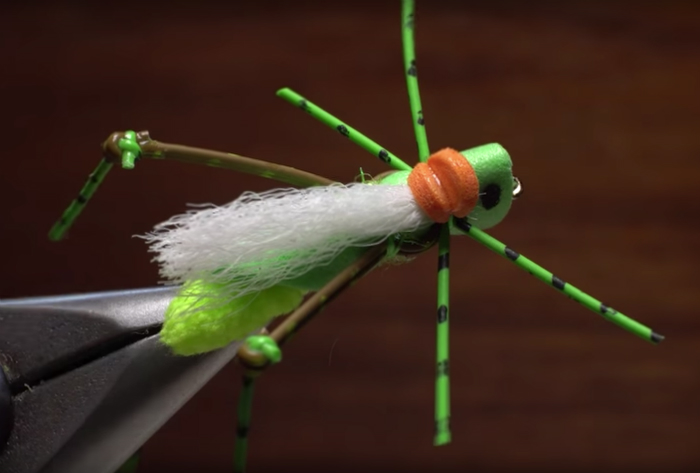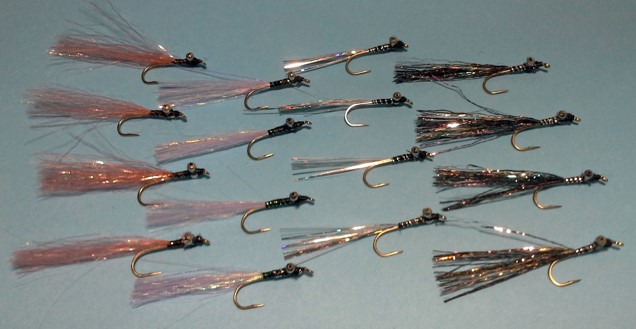
Does the idea of using a Mop Fly offend you? Well, then perhaps you can get behind the way that Tim Flagler of Tightline Productions uses that mop material to create a cool-looking dry fly. Tim’s Mop Hopper (how could he resist calling it the Mopper?) looks complicated to tie, but it really isn’t. And the result is a high-floating, visible grasshopper imitation that should fool even finicky trout and bass.
In this great video, Tim walks you through the steps for creating the Mop Hopper, which involves a lot of superglue. There are plenty of cool tying tricks on display, as usual, and I especially love the way that Tim uses the doubled round-rubber of the rear legs to hold the single-strand front legs in place. Genius!
Source: Orvis.com – how to tie a mop hopper
Materials
- Hook: Nymph/hopper hook (here, a Lightning Strike NH7), size 8.
- Thread: Fluoescent green, 6/0 or 140-denier.
- Body: Chartreuse mop “tentacle.”
- Adhesive #1: Superglue.
- Overbody: Green 2mm Craft Foam.
- Adhesive #2: Superglue.
- Eyes: Black permanent marker.
- Leg base: Caddis-green SLF Prism dubbing.
- Rear Legs: Barred round-rubber legs, medium.
- Adhesive #3: Superglue.
- Front Legs: Barred round-rubber legs, medium.
- Wing: White Polypropylene Floating Yarn.
- Indicator: Disc of 2mm Craft Foam.
- Adhesive #4: Superglue.





